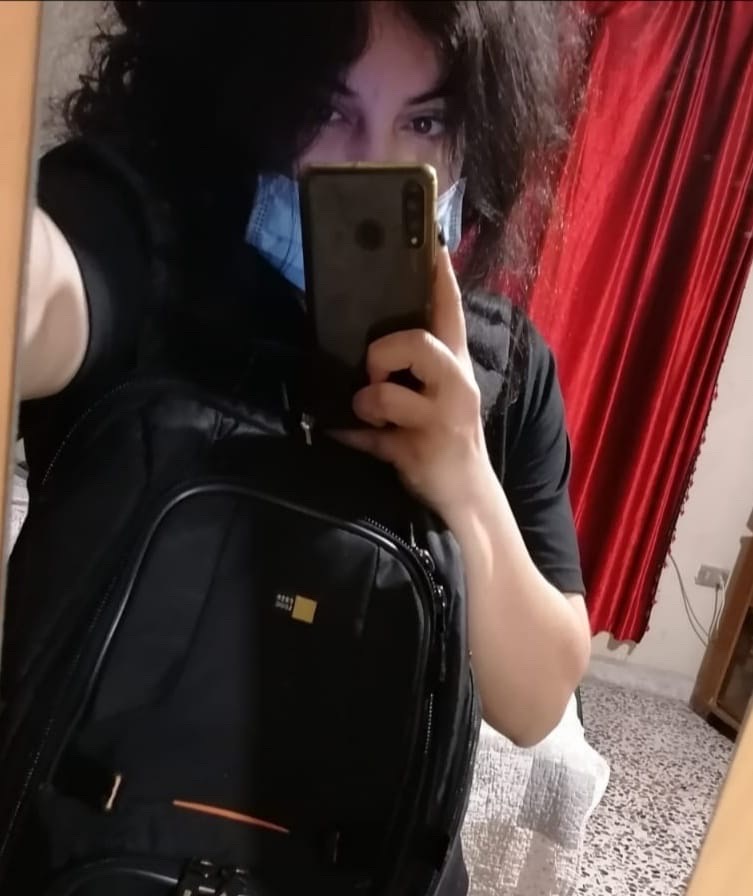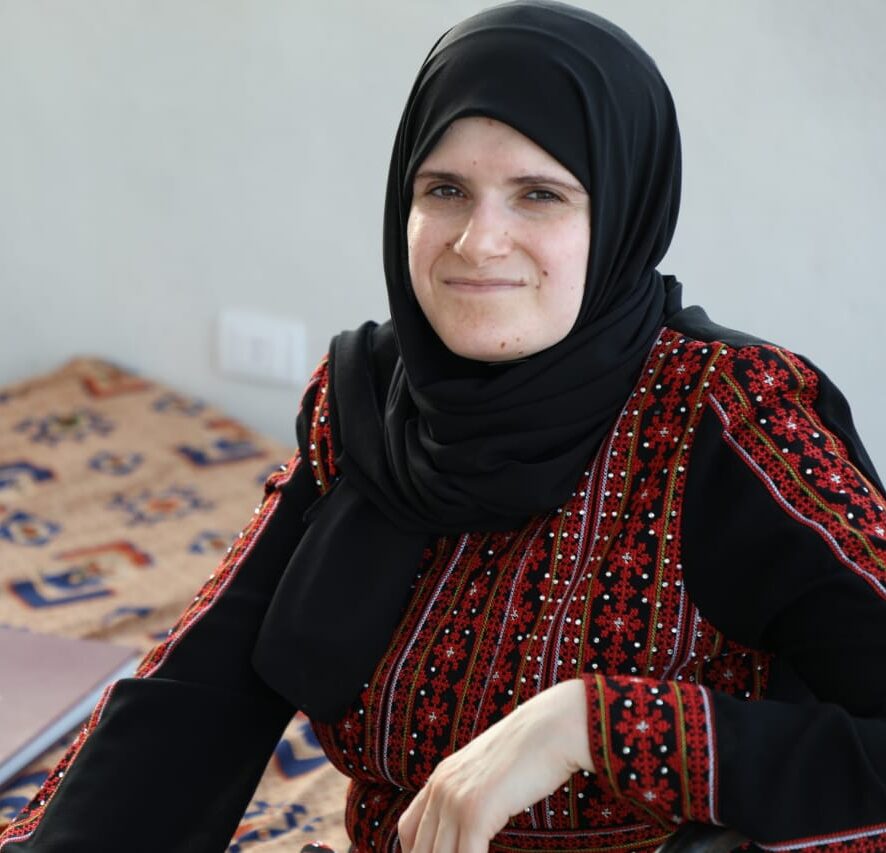On Wednesday 24th May we launched our Telling Our Tales series of workshops and talks with an ‘In Conversation’ event, where Basma El Doukhi spoke online to Rania Saadallah, a stateless refuge and photographer.
Rania Saadallah is a third-generation stateless Palestinian refugee who uses photography as a tool to share and tell tales about Palestinian refugees, mainly women, in the camps of Lebanon. Rania said: “Five years ago, I started my story in the world of photography. When it was enough to make me know people more, their pain and joy, in addition to creating a kind of love for people’s faces more. Despite this time, until this moment, every photography experience creates a state of fear and anxiety, as if it was the first time I was photographing. I moved between filming workshops, stories from the camps, exhibitions, and many stories that took a part of my soul.”
Basma El Douhki is a PhD Researcher in Migration Studies with the Global Challenges Doctoral Centre (GCDC) at the University of Kent. For many years Basma has been active in humanitarian and development work with refugees and asylum seekers within UNHCR, UNRWA and international NGOs in Lebanon and Syria. Basma’s own lived experience as a refugee, and her post-graduate studies in Emergency and Development Studies, have influenced her work exploring the nature of refugee-led organisations and the factors conditioning their impact and interventions.
We are also very grateful to Hela, a friend of Rania, who was providing an English translation of Rania’s words for us.
Photography in protracted displacement as a tool of activism
The conversation between Basma and Rania was inspiring and uplifting, covering using photography as a tool of activism, and as a way of telling and sharing the stories of Palestinian refugees. Rania mainly photographs and works with women in the camps in Lebanon, and with her work seeks to challenge narratives about refugees inside and outside the camps.
Rania explained that photography is a powerful tool that can keep memories alive. She spoke about the many stories, in every corner of the camps in Lebanon, and her desire to tell stories and make women’s voices heard. She wants to share these stories through people’s faces and expressions, capturing their experiences and bringing them to the outside world to increase compassion and understanding about refugees.
Rania touched on some of the challenges in her work, which included building relationships with people, often strangers to her, to make them comfortable enough with her to allow her to photograph them and tell their story. She also sometimes worried about going to certain areas of the camps, in terms of her personal safety, to meet people and ensure that she could connect with and tell stories of all different people in a variety of circumstances.
A further challenge for Rania is being taken seriously as a photographer in this world, and even more so given her status as a refugee living in refugee camps.
Rania’s dream is to open her own gallery that gathers stories from the women living in the camps. Though her gallery she wishes to show how women can be supported through her own actions, and also help more women to get the support they need.
Rania’s photography work
This video shows some photos taken by Rania Saadallah of stateless Palestinian refugees in the Rashidieh Palestinian camp in Lebanon. Rania, herself a third-generation stateless Palestinian refugee, uses photography as a tool to challenge the status quo and share narratives about refugees, particularly women who she encounters in the camp. Sharing people’s stories through their faces and their expressions, captures their experiences and brings them to the outside world to increase compassion and understanding. #KentRefugeeWeek
Q&A: Rania responds to audience questions
How can we in the UK support you in your work?
Rania felt she has a responsibility to find ways of delivering the stories she captures in the correct ways. She felt that some people don’t care about what happens to refugees inside the camps. She wants to ensure the stories are delivered to the right audiences so that she can communicate better about the experience of refugees and how people cope with being stateless.
Why do you like to photograph faces and expressions, and how do you think this helps challenge the narrative about refugees?
Basma and Rania both commented that often photography coming from the camps, from NGOs for example, shows people as victims, with miserable expressions and as vulnerable and helpless people. These images do not portray people as happy, empowered, and talented, or tell the positive stories about people’s lives and experiences.
Rania told us about an experience she had on a filming project where she was working to take photographs of people’s faces in a way that is natural and real, rather than posed and fake. She felt that photographing faces is important, and connecting with the individual in the process makes them feel that they are not being used and that they have an interesting story to tell. That they can be portrayed as successful, talented and happy and that this is a real reflection of them and their experiences.
Do you feel like you are making a difference, or that change is happening?
Rania spoke about the change and the difference she was making to the individuals she was photographing. She made them happy, and empowered them by telling their stories. However, she noted that larger, wider scale change was difficult to achieve. it was harder to have a bigger impact on conditions in the camps.
How do you feel about your role in inspiring young girls and women in photography and storytelling in the camps?
Rania feels proud that girls now approach her to teach them. One of them is Hela (our translator today) who reached out to her. They then go out together to find the stories to tell from the camps. Rania also noted that they were learning so much themselves from the people they photograph, so the relationship was mutually helpful.
At the University there are several camp experienced female staff and students, or those with refugee experiences. How can we help the cause?
Rania said that people such as Basma and other camp experienced people at the University were helping to portray a really good image of refugees, and were helping people from their backgrounds. Rania spoke of the role of the diaspora, and that going out to another place and not forgetting their home or their people was important. She felt that the women at the University were sharing experiences that represented those still in the camps and in their home countries, and she found this very inspiring.
Rania ended the talk by saying that she was very happy to be incited to speak with Basma, and to show the world that refugees are here, and that they are inspiring and talented. She also hopes that she has the opportunity to work together again in the future.
Thank you very much to Rania and to Basma, and to Hela for the fantastic translation for this session.


